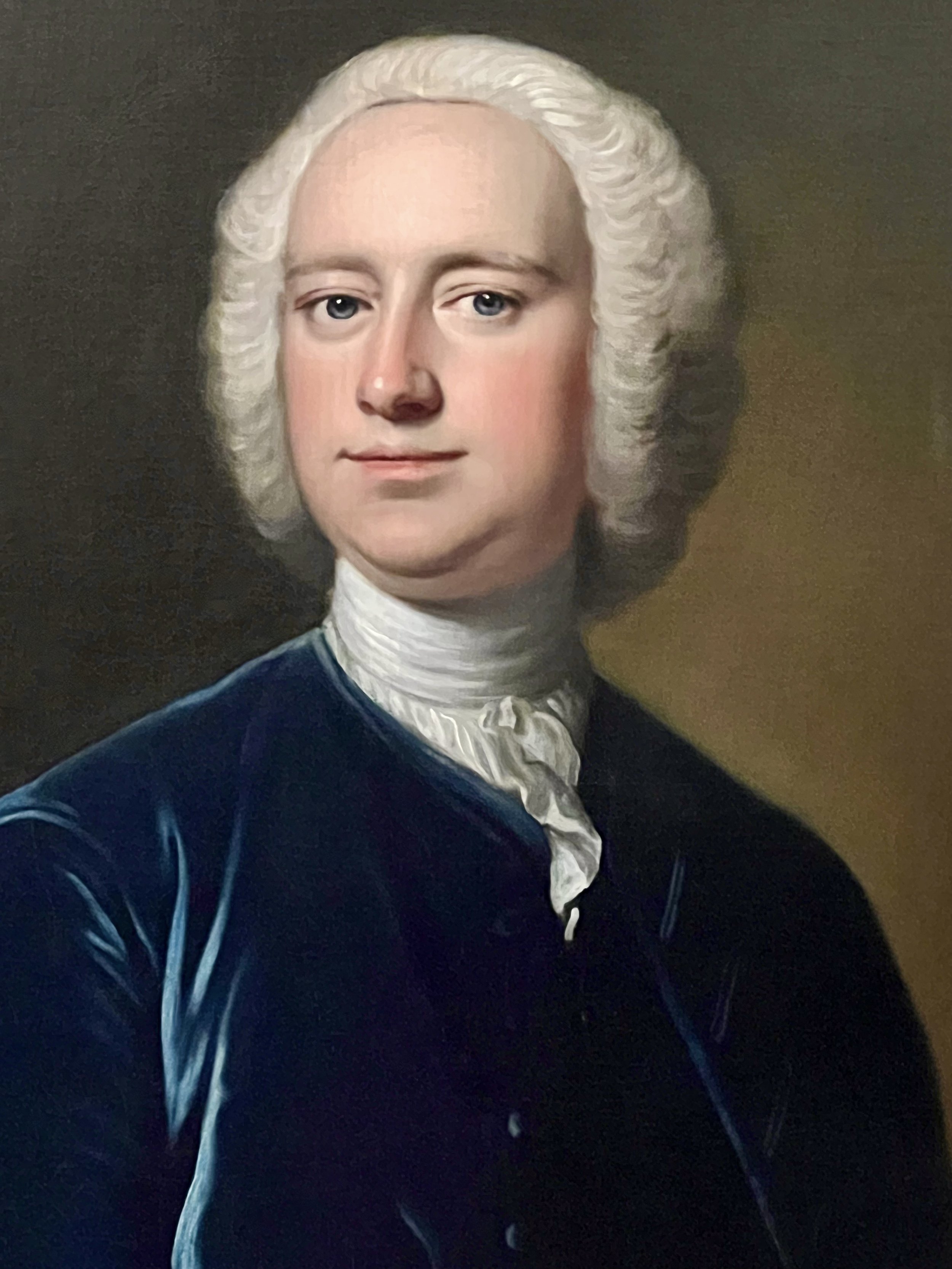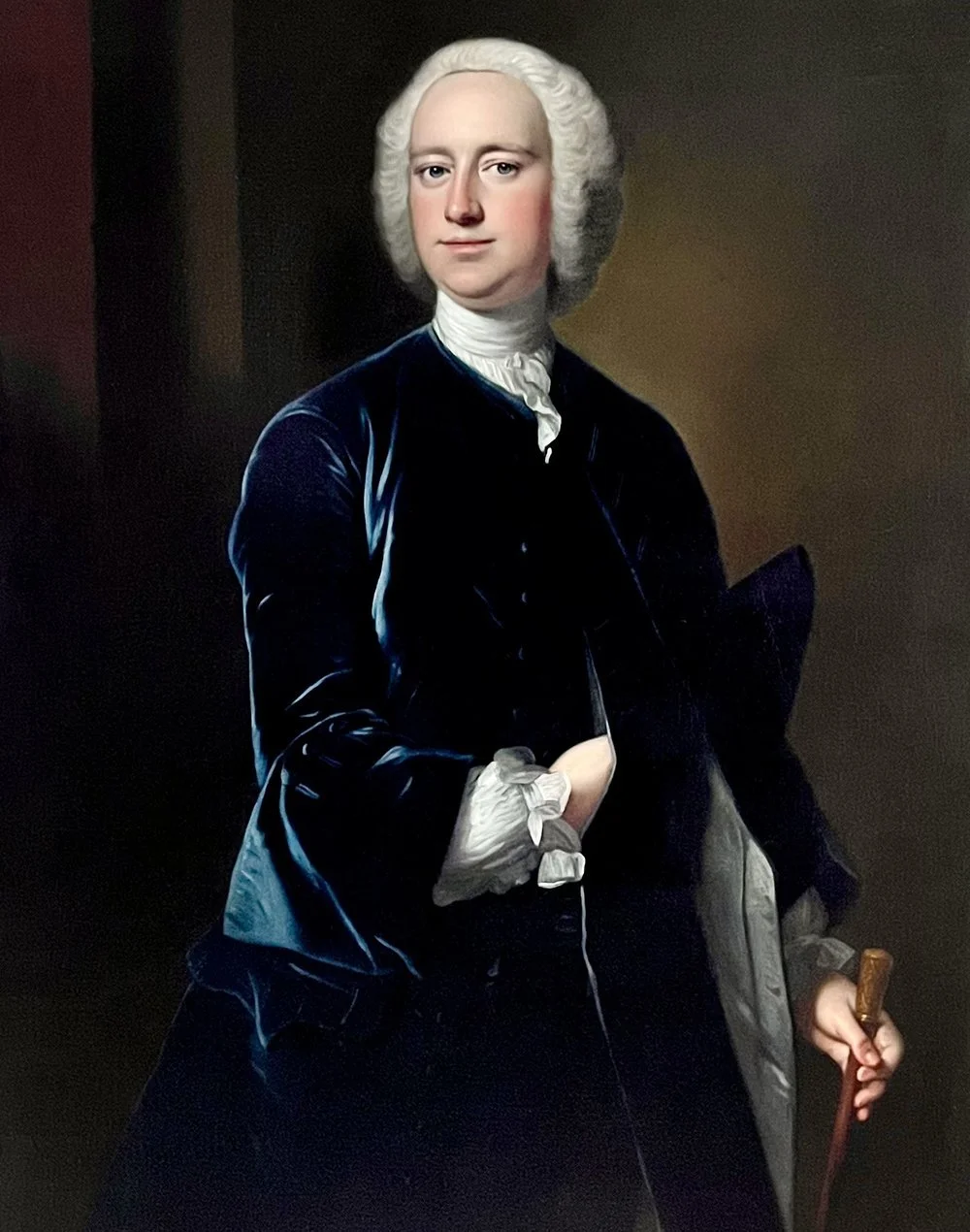











18TH CENTURY ENGLISH PORTRAIT OF JOHN PENNECK OF BARLEY, DEVON - BY THOMAS HUDSON (1701 - 1779)
Fine quality 18th century English portrait of John Penneck of Barley, Devon offrered in its original hand carved and gilded frame.
This work is a superlative example Thomas Hudson’s style in the first half of his career. During these years, the majority of his clients hailed from his native Devon and elsewhere in the west country, including fashionable and quickly-expanding Bath. Although Hudson had married the daughter of the successful London-based portrait painter Jonathan Richardson (1667-1745) by 1725 (when their first child was baptised) it was not until Richardson’s retirement in 1740 that he himself made the move to London. This was partly done out of respect for his father-in-law and partly out of a wish to avoid competing with him. Nevertheless, Richardson’s influence can be keenly felt in Hudson’s work in the early part of his career, with both his composition and technique emulating the methods of his father-in-law. This can be seen here most clearly in the sensitive handling of the face.
The Devonian landowner John Penneck was exactly the sort of figure who formed the basis of Hudson’s clientele in this period. This portrait provides a good example of exactly why these patrons found Hudson’s work so appealing. Dressed in a monochrome blue velvet – an early form of the three-piece suit – with his hand thrust into his velvet coat and his head confidently twisted to one side, Penneck here is shown looking by turns insouciant and commanding, a dashing country gentleman who is well assured of his status. The highlights on Penneck’s blue velvet coat, moreover, suitably draw attention to the luxuriance of this fabric that was highly fashionable among gentlemen in the first decades of the eighteenth century.
Following the death of Richardson and his move to London, Hudson quickly established himself as the capital’s pre-eminent portraitist. He painted celebrities such as the composer Georg Friedrich Handel (NPG 3970) and among London’s highest-ranking political figures, including the king, George II (NPG 670). From 1743, he began to make use of the drapery painter Joseph van Aken (c.1699-1749) in order to increase his output. An artist with an international awareness, Hudson made two trips to Europe – one to France, Holland and Flanders in 1748 and another to Rome in 1752. It was around this time that Hudson began to collect Old Master drawings.
Hudson’s success as a portraitist attracted many pupils who wished to study with him. Among them were such figures as Joseph Wright of Derby (1734-97), who was in Hudson’s studio from 1751-3 and 1756-7, and Joshua Reynolds (1723-92), who worked for Hudson from 1740-43. The success of this latter, who did so much to transform eighteenth-century British portraiture, however, turned the pupil into a powerful rival. Such was Reynolds’s success that by the 1760s Hudson’s style looked old-fashioned and he struggled to find new commissions. He instead decided to retire to his villa in Twickenham, where he died in 1779.
Higher resolution images on request. Worldwide shipping available.
Framed: 145cm x 120cm / 57" x 47" Canvas: 127cm x 102cm / 50" x 40"

